| DORSET - 3 |
< Home - Index - Page> <Dorset - 1> <Dorset - 2> <Dorset - 4>
| Minterne Magna - St Andrew |
| O/S Ref: ST 660 043 |
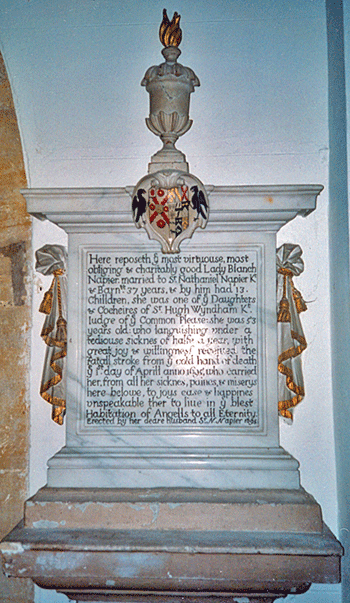 |
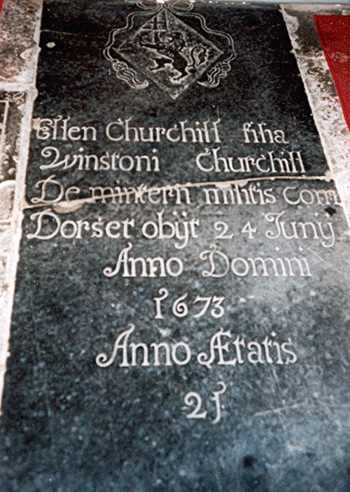 |
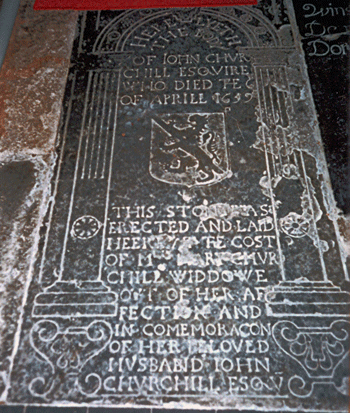 |
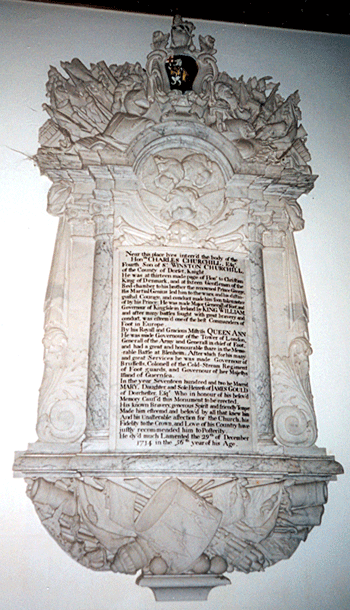 |
| Lady Blanch Napier (1659) Mother of 13 children |
Ellen Churchill (1673 at 21)
Daughter of Winston Churchill Ledgerstone |
John Churchill (1659) Ledgerstone |
General the Hon Charles Churchill (1714) 4th son of Sir Winston Churchill. Attrib Robert Taylor Snr |
 |
Morden - St Mary |
 |
| O/S Ref: SY 916 956 |
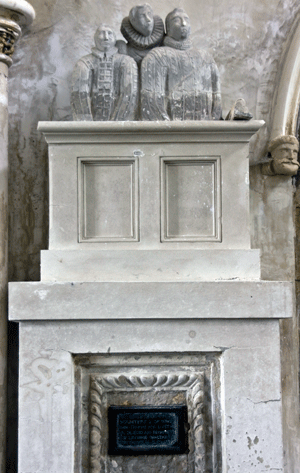 |
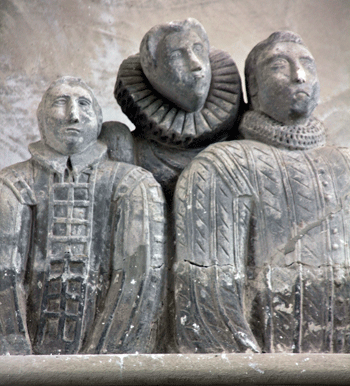 |
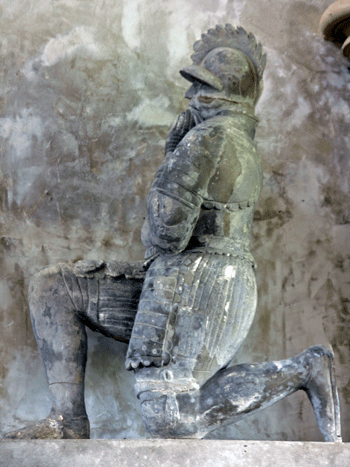 |
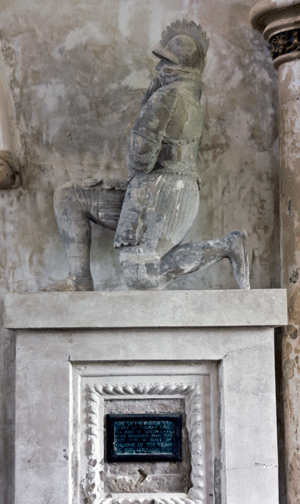 |
| The re-erected Earle monuments, either side of the tower arch., dated 1597. Thomas Earle kneels in an attitude of homage on the norrth side while on the south side are three members of his family. The monument was originally in the former chancel; the plinths are 19th century. | |||
| Motcombe - St Mary |
| O/S Ref: ST 849 252 |
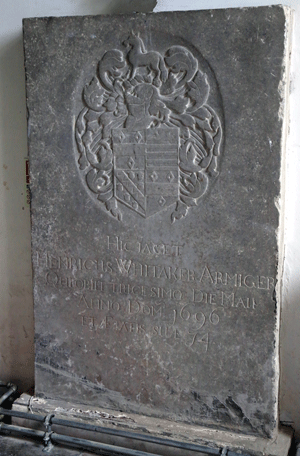 |
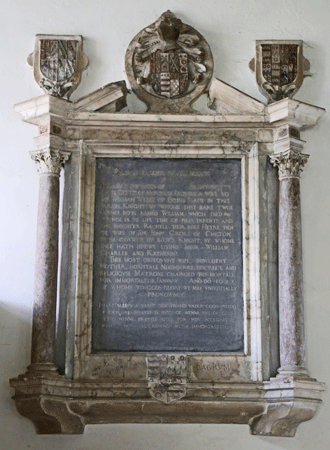 |
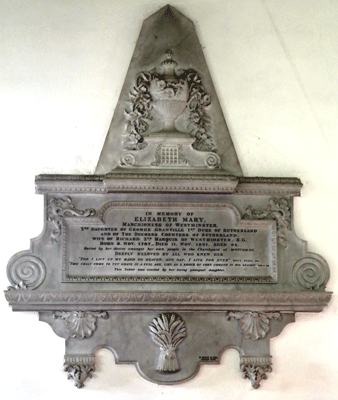 |
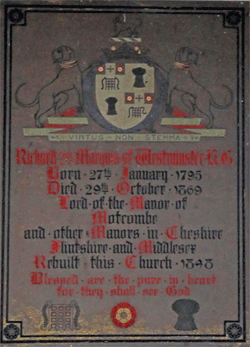 |
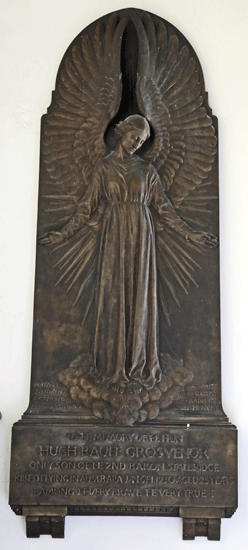 |
| Henry Whittaker (1696) Inscription in Latin. Ledger stone but now wall mounted. | Elizabeth Webb (1627) |
Elizabeth Mary Marchioness of Westminster (1891) Wife of Richard (right) |
Above: Richard, 2nd Marquis of
Westminster (1869) Right: Hugh Raufe Grosvenor. (1930) killed in flying accident in Australia. |
 |
Nether Cerne - All Saints |
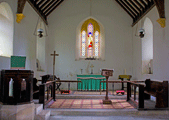 |
| O/S Ref: SY 670 982 |
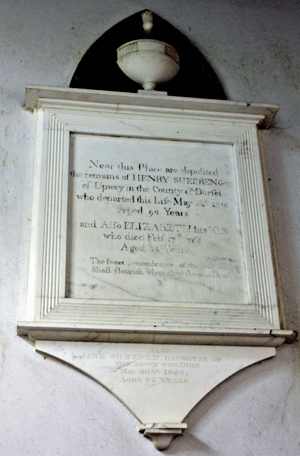 |
| Henry Shepping (1810) & his wife Elizabeth (1766) |
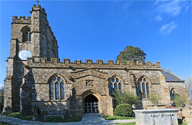 |
Netherbury - St Mary |
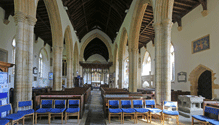 |
| Church open. Park outside. Very attractive
village O/S Ref: SY 470 995 |
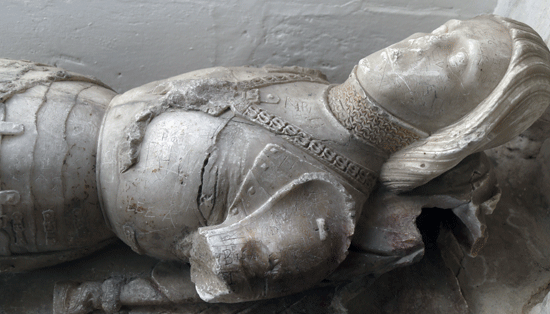 |
||
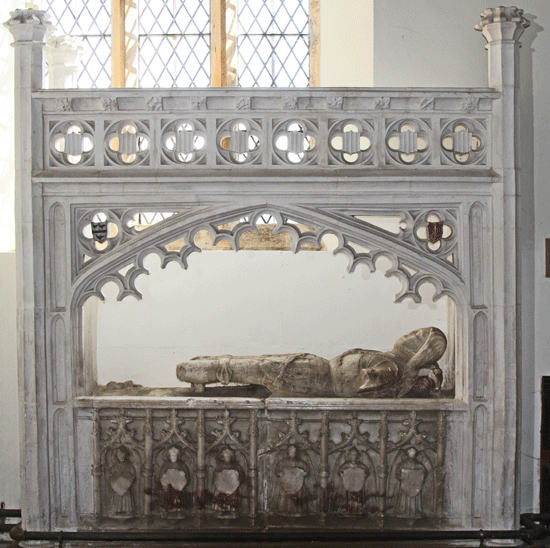 |
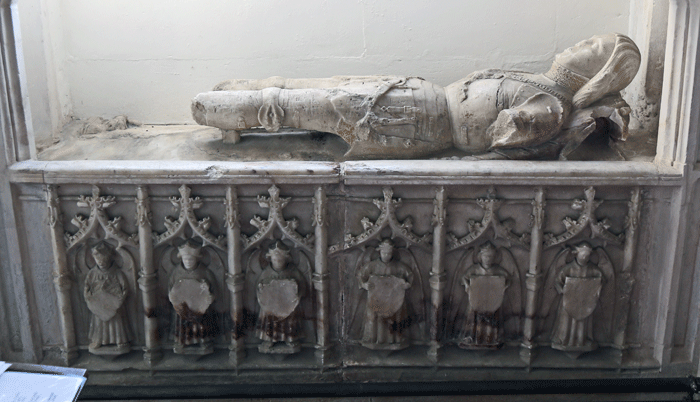 |
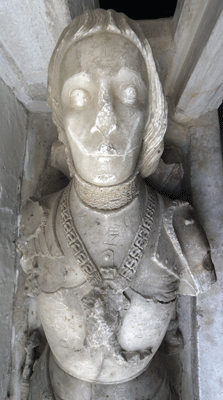 |
[RCHM 6] A member of the Moore Family. Alabaster tomb chest and effigy of c. 1480 but stone canopy of a later date |
||
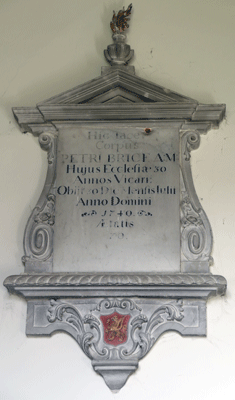 |
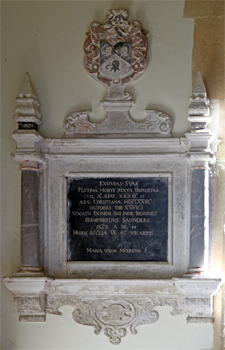 |
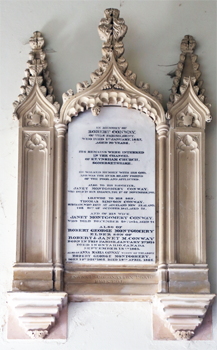 |
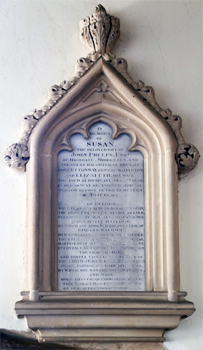 |
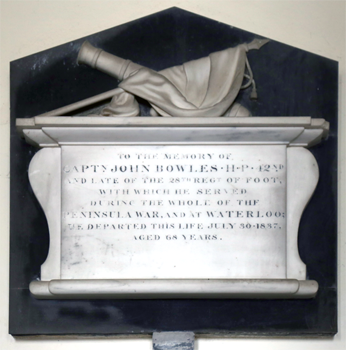 |
|
1) [RCHM 1] Peter Brice AM (1740)Vicar 2) [RCHM 2] Humphrey Saunders MA (1673) Vicar. Latin text. 3) [RCHM 3] Robert Conway (1837) 'his remains were interred in the chancel of Keynsham church, Somersetshire'; daughter, Janet Montgomery Conway (1811), died in her infancy; son, Thomas Simpson Conway (1847); widow, Janet Montgomery Conway (1854). Elder son, Robert George Montgomery Conway (1865 ) and his widow, Anna Maria Conway (1886). Marble in stone surround, signed EVANS Ft CORONATION ROAD, BRISTOL. 4) [RCHM] Susan Phelps (Conway) (1846) Marble with stone surround. 5) [RCHM 5] Capt John Bowles (1837) 42nd and late of 28th Regt of Foot. Fought in all of Peninsular war and at Waterloo. Black and white marble. |
||||
 |
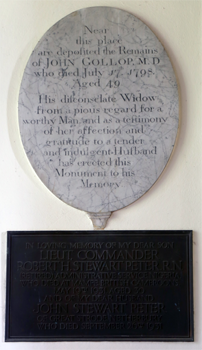 |
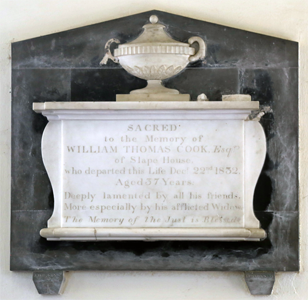 |
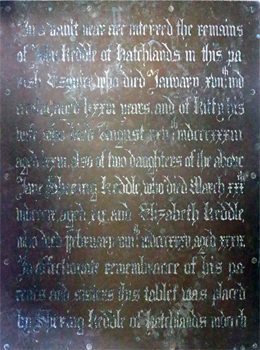 |
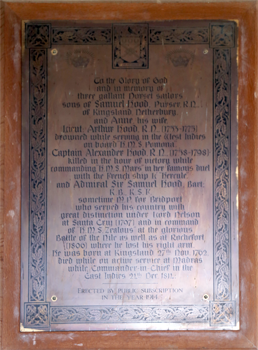 |
| James Bandinel D.D. (1504) , 17 years vicar; his wife, Margaret (1792) and their daughter, Mary Anne (1798), aged 14. There were 2 sons and a second daughter. | John Gollop MD
(1798) Below is illegible |
[RCHM 7]
William Thomas Cook (1837) Signed: J W H KINS BEAMINSTER |
John Keddle [1853] and his wife, Kitty (1833); and two daughters: Jane [Shering] Keddle [1820] age 12, and Elizabeth Keddle [18_] | Lt Arthur Hood RN, Cpt
Alexander Hood RN and
Admiral Sir Samuel Hood Bt KB KSR see the box below |
| '... in memory of three gallant Dorset
Sailors, sons of Samuel Hood, Purser RN and Anne his wife. 'Lt Arthur Hood RN (1733-1775) drowned at sea while serving in the West Indies on board HMS Pomona. 'Cpt Alexander Hood RN (1758-1798) killed in the hour of victory while commanding HMS Mars in her famous duel with the French ship L'Hercule. 'Admiral Sir Samuel Hood Bt KB KSR Sometime MP for Bridport who served his country with great distinction under Lord Nelson at Santa Cruz (1797) and in command of HMS Zealous at the glorious Battle of the Nile as well as at Rochefort where he lost his right arm. He was born at Kingsland 27th November; died on active service at Madras while Commander-in-Chief in the East Indies 24th December 1812.' 'Erected by public subscription in the year 1914' Note that this monument was erected more than a century after the death of these sailors. |
| Other Monuments |
Elizabeth (Le Boquet) Kenway (1822) Wahite tablet on balck base. Lt Ronald Bruce Ronald (1943) Died on active service with the Royal Armoured Corps in North Africa aged 21. Gray tablet Lt John Molyneux Spottiswoode Groves (1894) 'interred in the Oossoor Cemetery, Bangladore, India' Aged 24. Brass with military badge John Keddle (1844); his wife, Kitty. '... interred in the north aisle of this church.' Their daughter-in-law, Anne Keddle (1843) and daughter, Charlotte Catherine Keddle (1852) 'both of whose remains are deposited in a vault in the adjoining churchyard.' Col Edwin Shuckburgh Denniss (1886) brass Col Horatio Holt Hart (1915) Royal Engineers. Died at Stringar, Kashmir and 'was cremated' . Brass with military badge General Sir Reginald Clare Hart VC GCB KCVO (1931) Col. Commandant Royal Engineers. His wife, Dame Charloptte Augusta Hart (1936) Brass with military badge. Cpt Laurance George Hart (1914) 61st KGO Pioneers. KIA Tanga, East Africa. Also his twin brother, William Cecil Hart, 'who gave his life in the war'. Brass with military badge |
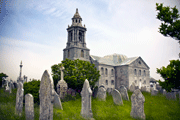 |
Easton (Portland) - St George |
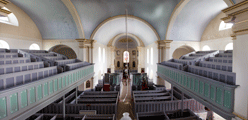 |
| O/S Ref: SY 686 720 |
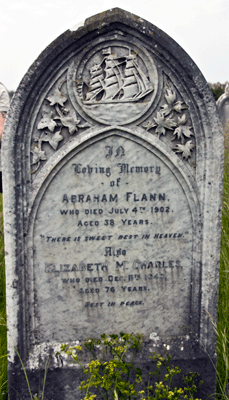 |
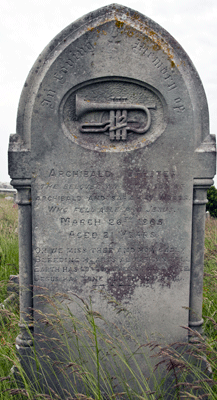 |
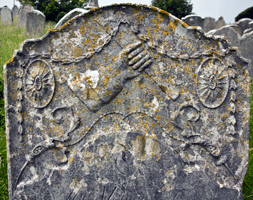 |
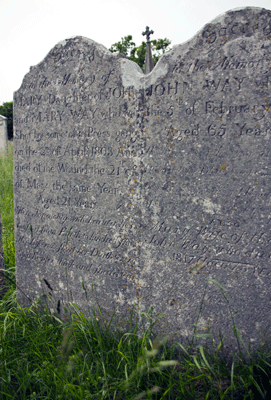 |
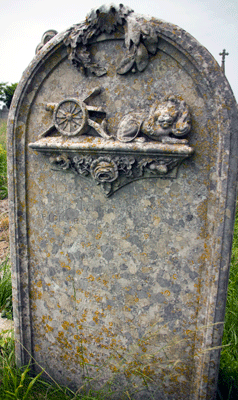 |
| Abraham Flann (1902) & Elizabeth M Charles (1943) | Archibald Orrestes (1905) | Headstones with military insigniaUnknown | John & Mary Way | Richard Lano Pearce (1864) |
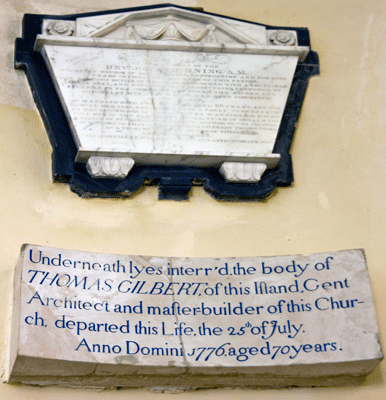 Above: Rev John Manning (1826) (rector) signed I Hellyer Below Thomas Gilbert (1776) Architect and master builder of the church Right top:Interesting tablet of 1978 recording a disgraceful event in 1803 Right Middle: Sidney Ayles MVO MBE (1981) Crown agent and bailiff of the Island and Royal Manor of Portland Right bottom: Captain John Hope Bowles (1783) Commander of HM Sloop Orestes Coffin plate? |
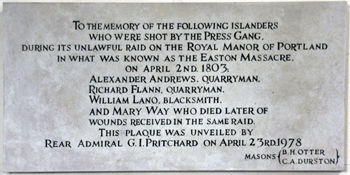 |
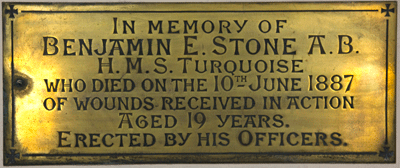 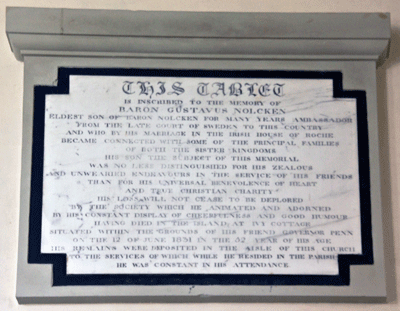 Benjamin E Stone AB HMS Turquoise Dow 1887 aged 19 Baron Gustavus Nolcken (1831) Eldest son of the Swedish Ambassador |
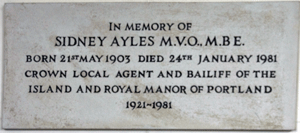 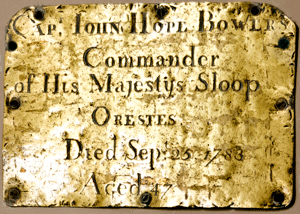 |
 |
Puddletown - St Mary the Virgin |
 |
| Church open
normal hours; park in the street nearby. The most
interesting monuments are in the Athelhampton Chapel .
Website O/S Ref: SY 758 943 |
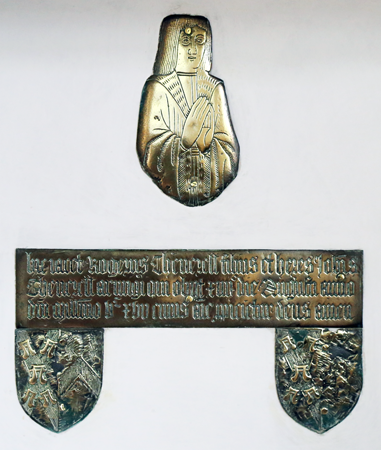 |
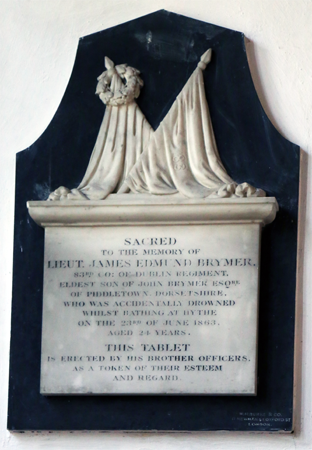 |
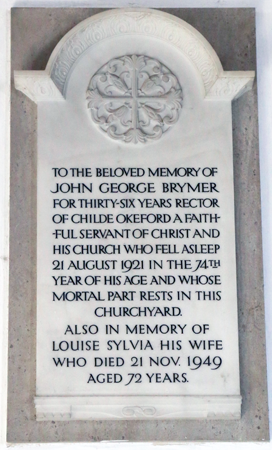 |
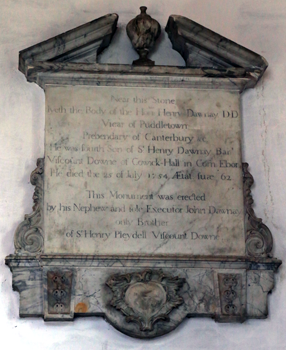 |
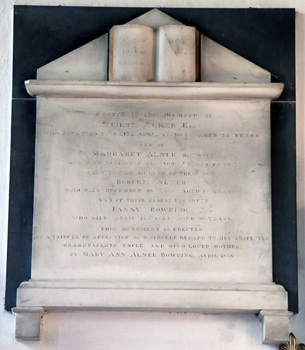 |
| Roger Cheverell (1517) | Lt James Edmund (1863) '... accidentally drowned whilst bathing...' | John George Brymer (1921) 36 years rector of Childe, Oxon. '...whose mortal part rests in this churchyard.' Also his wife Louise Sylvia (1949) | Hon Henry Dawnay DD (1754) Vicar of Puddletown, Prebendary of Canterbury. marble | Robert Abner (1807) ? & Margaret |
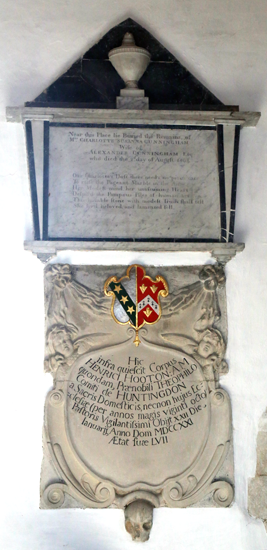 |
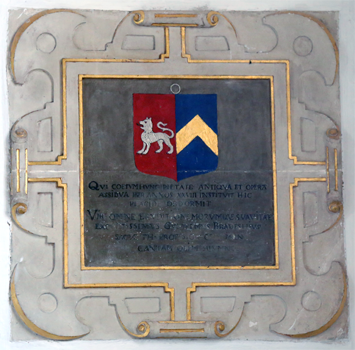 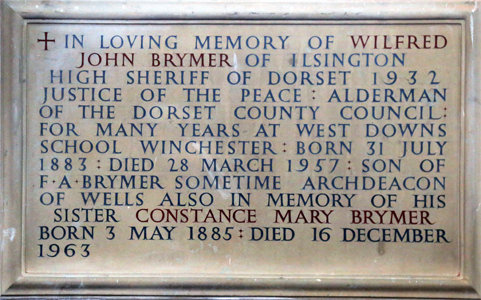 |
 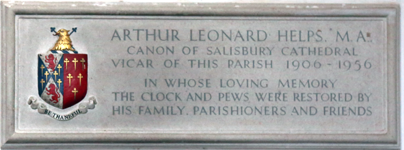 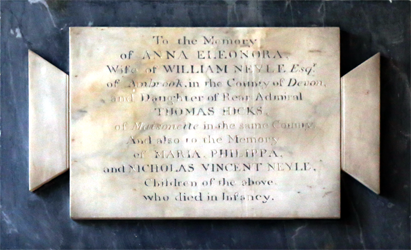 |
 |
| Left top: Mrs Charlotte Susanna Cunningham (1804) marble. Left bottom: Henry Hooton AM (1721) Latin inscription; arms of Hooton impaling Arnold of Islington. Above top: Possibly William Brandish (1638) . Above bottom: Wilfred John Brymer JP (1957) his sister Constance Mary (1963) | Top: Kathleen Helps (1930) Mother of the Vicar whose tablet is belowMiddle: Arthur Leonard Helps MA (1956) Canon of Salisbury, vicar of this parish Bottom: Anna Eleonora Neyle Also Maria Phillippa & Nicholas Vincent '... children of the above who died in infancy...' No dates. |
James Lukyn (1671) |
| Other Monuments | |
|
James Boswell (1820)
tablet Unknown Floor Slab defaced 17th century (in nave) George Edwards (1743) headstone William Ernest Brymer (1909) MP Dorchester 1874-81; South Dorset 1891-1906. Very similar to the monument to Wilfred John Brymer above |
Mary Hayman (1696)
floor slab (in chancel) John Brune (17th century) Floor slab (in nave) Martha (1735) & Robert Purchase (1745) headstone with emblems of mortality Admiral Ricardo CB (1931); his wife Rhoda (1962); their sons: David (1924), Harry MA (1948), and Peter MBE, MA (2006) Churchwarden 1957-1994. |
| The Athelhampton Chapel |
| The Athelhampton Chapel is on the south side of the church and contains a number of monuments; it is entered directly from the church through an early 16th century arch. The chapel dates from the 13th century but with later alterations and additions. Its name comes from the nearby Athelhampton Hall, which was the seat of the Martyn and Bruce families whose monuments we see in the chapel. I first visited Puddletown Church in the early 2000's and found the monuments in a poor state, especially from the effects of damp. I photographed the monuments at that time and it is these photographs which have appeared on this site. In 2012 a major programme of conservation work was carried out on the chapel and its monuments. I visited Puddletown again in 2019 to photograph the monuments again and these photographs are shown below, together with one of each monument showing its poor state before its restoration. |
|
 |
 |
|||
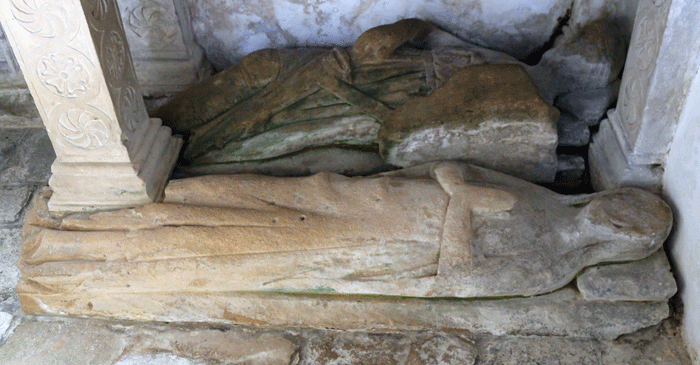 |
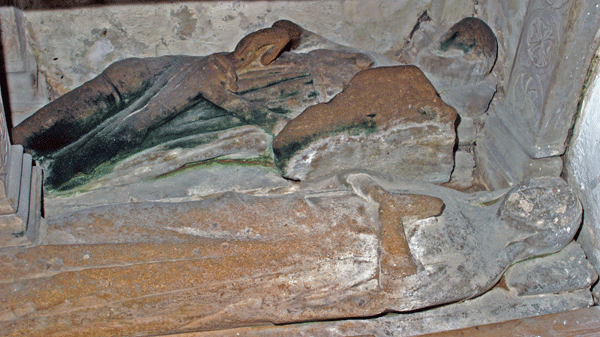
 |
|
|||
 |
 |
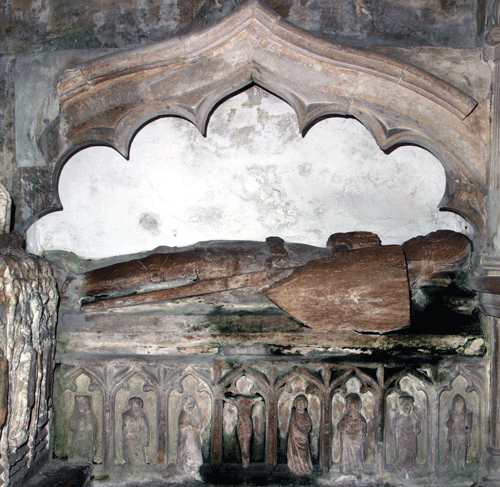 |
|
This effigy lies on a tomb chest with a panel, also of Ham Hill stone, with a carved Crucifixion in the centre flanked by four saints on either side; that on the far left was concealed by the alabaster tomb (see below) and so has retained some colour. The limestone arch is of the same date. Before conservation the right side of the effigy was partly buried in the wall: this helped to preserve some of the original paintwork on this side. During conservation the monument was brought forward again and wall was cut back showing some red of his surcoat and a black line indicating that some of the armour details were painted rather than carved ; a dagger (the hilt of which can just be seen in one of the above photographs) was also exposed. Immediately above can be seen the monument after restoration on the left and before restoration on the right; the structure blocking the view of the feet is part of the alabaster tomb and, when this was removed, it could be seen that his feet rested on a dog. ⁻¹ The monument may be that of Robert Martyn (1376) son and heir of Nicholas above. |
|
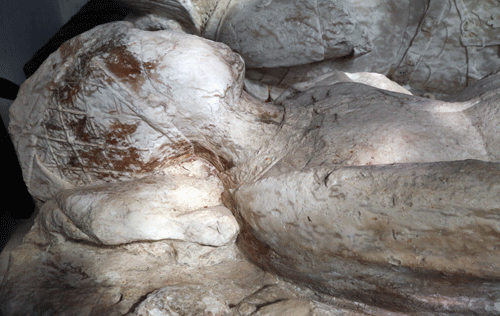 |
Alabaster Knight & Lady 1470-1480 |
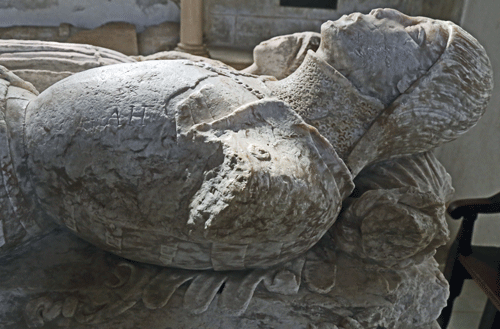 |
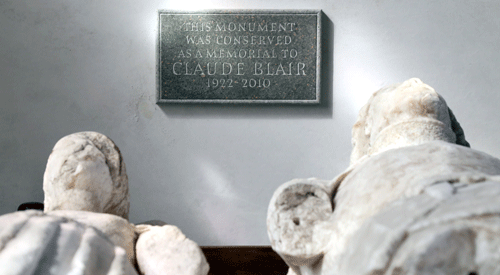 |
||
| This monument was conserved as a memorial to Claude Blair CVO OBE Litt D FSA (1922-2010) Dr Blair was for many years Keeper of Metalwork at the Victoria and Albert museum. He was an acknowledged expert on arms and armour and a founder president of the Church Monuments Society. The plaque is of Purbeck Marble. |
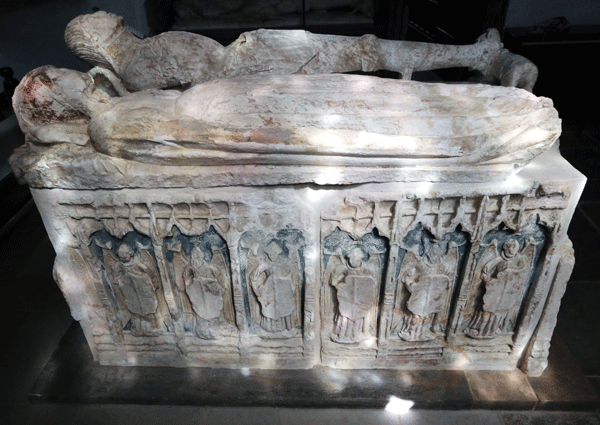 |
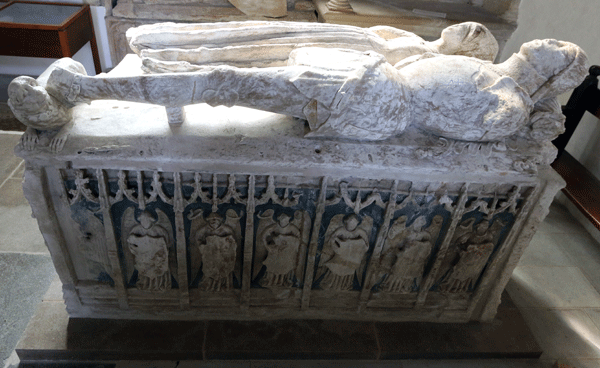 |
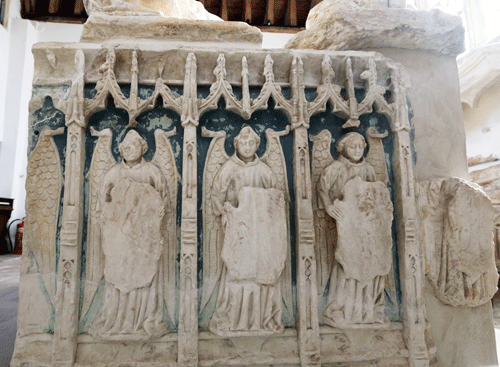 |
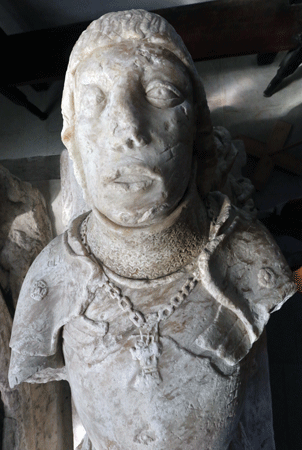 |
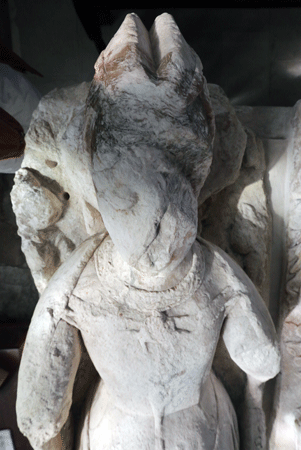 |
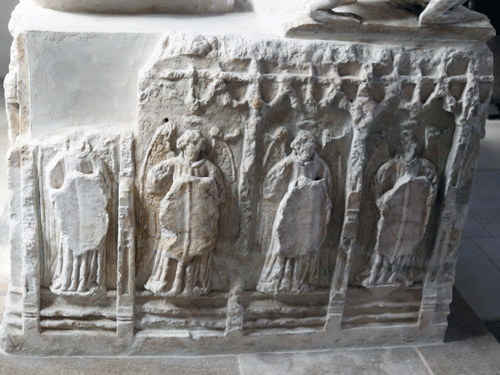 |
 |
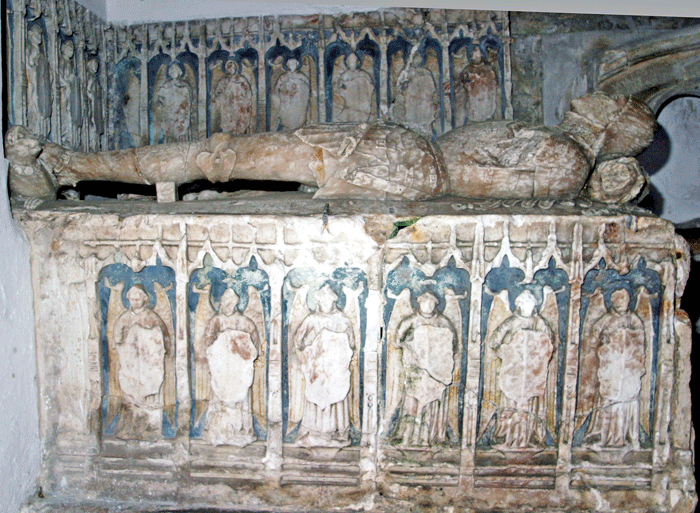 |
| A member of the Martyn
family and his wife. This monument is of alabaster and,
despite being very mutilated, some of the original painting
survives, although that behind the angels is mainly
overpainting. Each of the angels around the tomb
chest had a scroll above the head but, being fragile these are
mainly lost, although fragments remain. The knight,
unusually, has an ape at his feet, a badge of the Martyn family. Right shows the monument in its position before restoration. It was in set a corner, slightly blocking the Ham Hill Stone knight, with the potentially hidden side panels removed and attached to the two walls above the monument. This indicates that the monument was originally free standing as it is today, and probably in a similar position. |
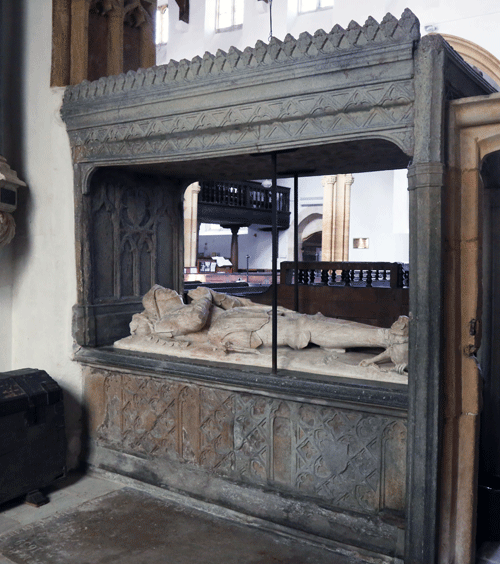 |
Alabaster Knight & Purbeck Marble
Tomb c. 1480 |
 |
|
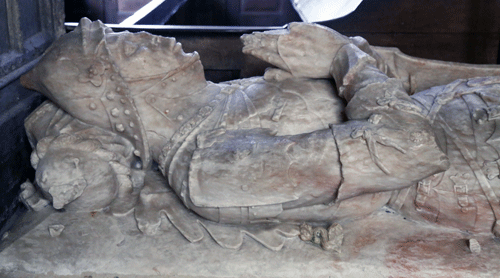 |
Above right: Effigy and tomb from the chapel. On the floor below you can see an incised slab to John Brun (1645) whose monument can just be seen above. This is shown in detail below. The ledger stone does not give the date of John's death but rather names his father, Charles, and uncle, Sir John (John was his heir, as he had no children) who are buried elsewhere in the chapel. It gives the date of death of Sir John as 1639, as on the monument but the date of death is given (16th March) whereas on the monument the date of burial is given (25th March) Above right: Knight from the nave (top) and chapel (bottom) Below: Knight from the nave and chapel - full length; and portrait |
 |
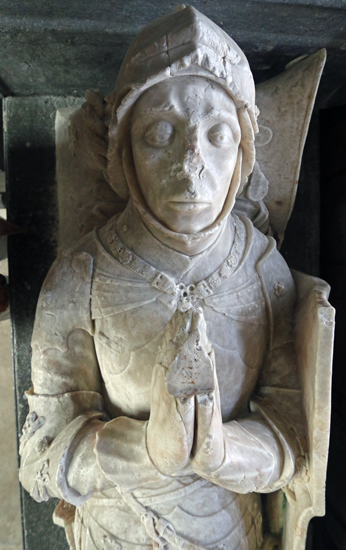 |
 |
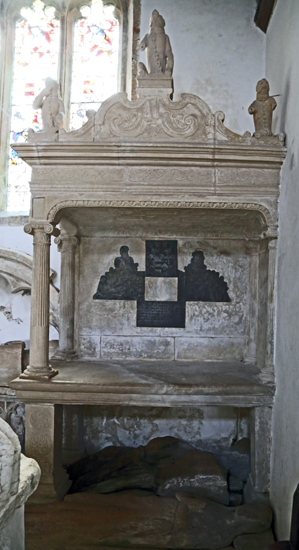 |
Nicholas Martyn Tomb (d. 1595) | |||
 |
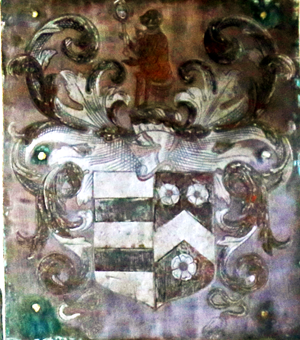 |
|||
| This is a table tomb with canopy, which is buried somewhat in the walls. The brass on the back wall has been made in four separate sections: on left is Nicholas Martyn (1595), behind whom are four sons who pre-deceased him; on the left his wife Margaret (Wadham), behind whom are seven daughters, four of whom survived to inherit the estate. On the top are the arms: on the shield Martyn impaling Wadham and above is the crest (shown separately to the far right); this consists of a chained ape looking into a hand mirror with a reflection not only of the ape but a human (your!) face, representing the Martyn motto: He who looks at Martyn's ape , Martyn's ape shall look at him. Interpret that as you will. On the lowermost brass is written his epitaph: it mentions Nicholas and four daughters, namely, Frances, Elizabeth, Jane and Anne. His wife doesn't get a mention (rather like the 'and wife' texts in Pevsner!) | ||||
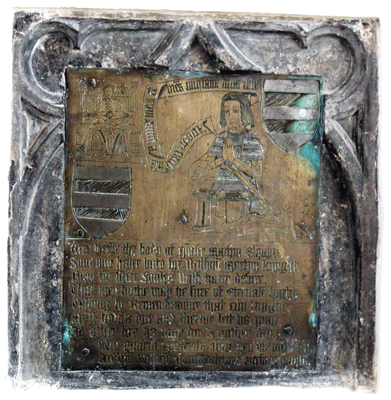 |
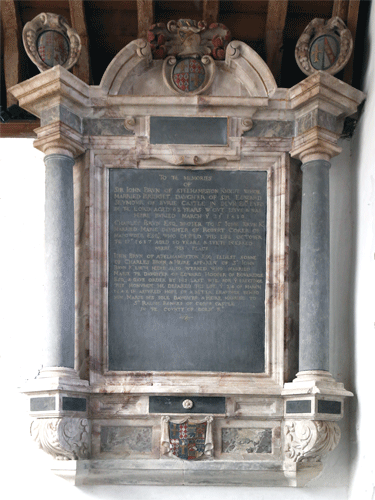 Sir John Brun (1639). His brother Charles Brun (1637), The latter's eldest son, John Brun (1645). Marble, alabaster, and coloured inlays |
|
Christopher Martyn (1524) This brass is set, rather unevenly, into an recycled stone architectural frament which is itself set into the east wall of the chapel. The scroll around is head has a Latin inscription, which translated reads, 'Hide thy face from my sins and blot out all my iniquities' The inscription below, in English, reads, 'Here lieth the body of Christopher Martyn Esquire, Son and heir unto Sir William Martyn knight. Pray for their souls with hearty desire, That they both may be sure of eternal light. Calling to remembrance that every wight Must needs die, and therefore let us pray As others, for us, may do another day'. 'This Christopher died 22nd day of the month of March, In the year of our Lord one thousand five hundred and twenty-four' Above left can be seen a reprentation of the Trinity - with the Dove. The Martyn arms appears three times: argent, two bars gules; The argent (silver) remains but the gules (red) has faded. |

